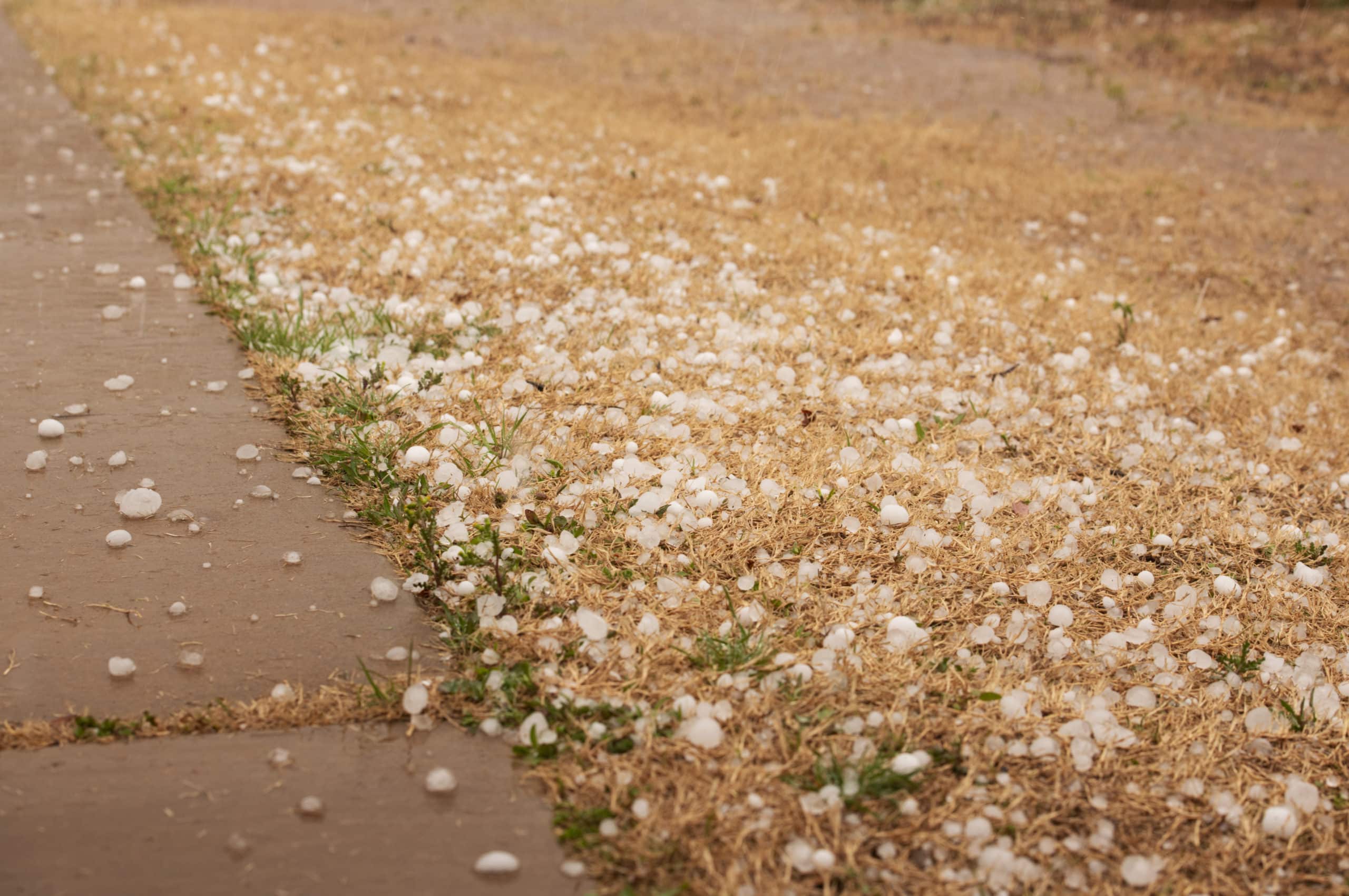
Hail Storms in Iowa
Another type of storm system that can cause a great deal of damage to your roof is a hail storm! Hail can accompany thunderstorms at any time during the Spring, Summer, or Fall, especially May – September.
Hailstones are formed when raindrops are carried upward by thunderstorm updrafts into frigid areas of the atmosphere and freeze.4 The hail falls when it becomes heavy enough to overcome the storm’s updraft. Most hailstorms consist of different sized stones and the size is often compared to common objects such as:
Pea = 1/4 inch diameter
Mothball = 1/2 inch diameter
Penny = 3/4 inch diameter
Nickel = 7/8 inch
Quarter = 1 inch — hail quarter size or larger is considered severe
Ping-Pong Ball = 1 1/2 inch
Golf Ball = 1 3/4 inches
Tennis Ball = 2 1/2 inches
Baseball = 2 3/4 inches
Tea cup = 3 inches
Softball = 4 inches
Grapefruit = 4 1/2 inches
How Do Hail Storms Damage Your Roof?
Once again, the amount of damage caused depends on the severity of the storm and the size of the hailstones.
However, there are several signs of damage that homeowners or property owners should look for after a storm:
- Shingles – dents, cracks, or missing shingles
- Siding – dents, dings, and cracks
- Windows – cracked or shatter glass
- Gutters & Downspouts – dented or displaced
Des Moines Area Roofing
We are your roof repair and installation specialists for damaged roofs, leaky tiles, missing shingles, and other types of storm destruction in Iowa. We understand how serious roof damage can be and are here to talk you through the repairs from start to finish. Whether the damage is minor or major, we pride ourselves in our accurate estimates, so you will know how long the work will take to complete.
If you have experienced storm damage to your home, call us at 515-360-7480. We are also available for annual roof inspections that can help detect damages early and save you money in roof replacement costs.
